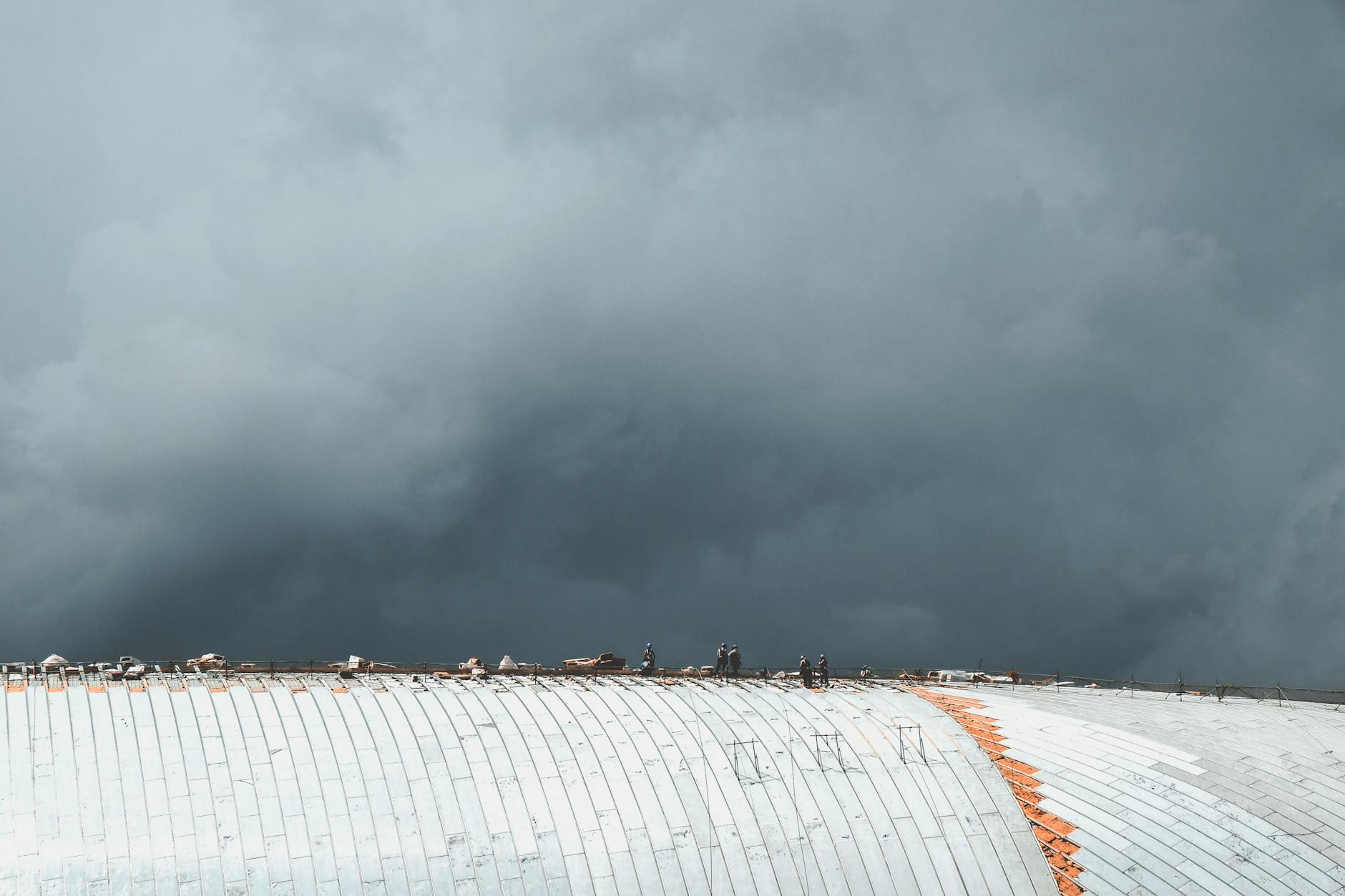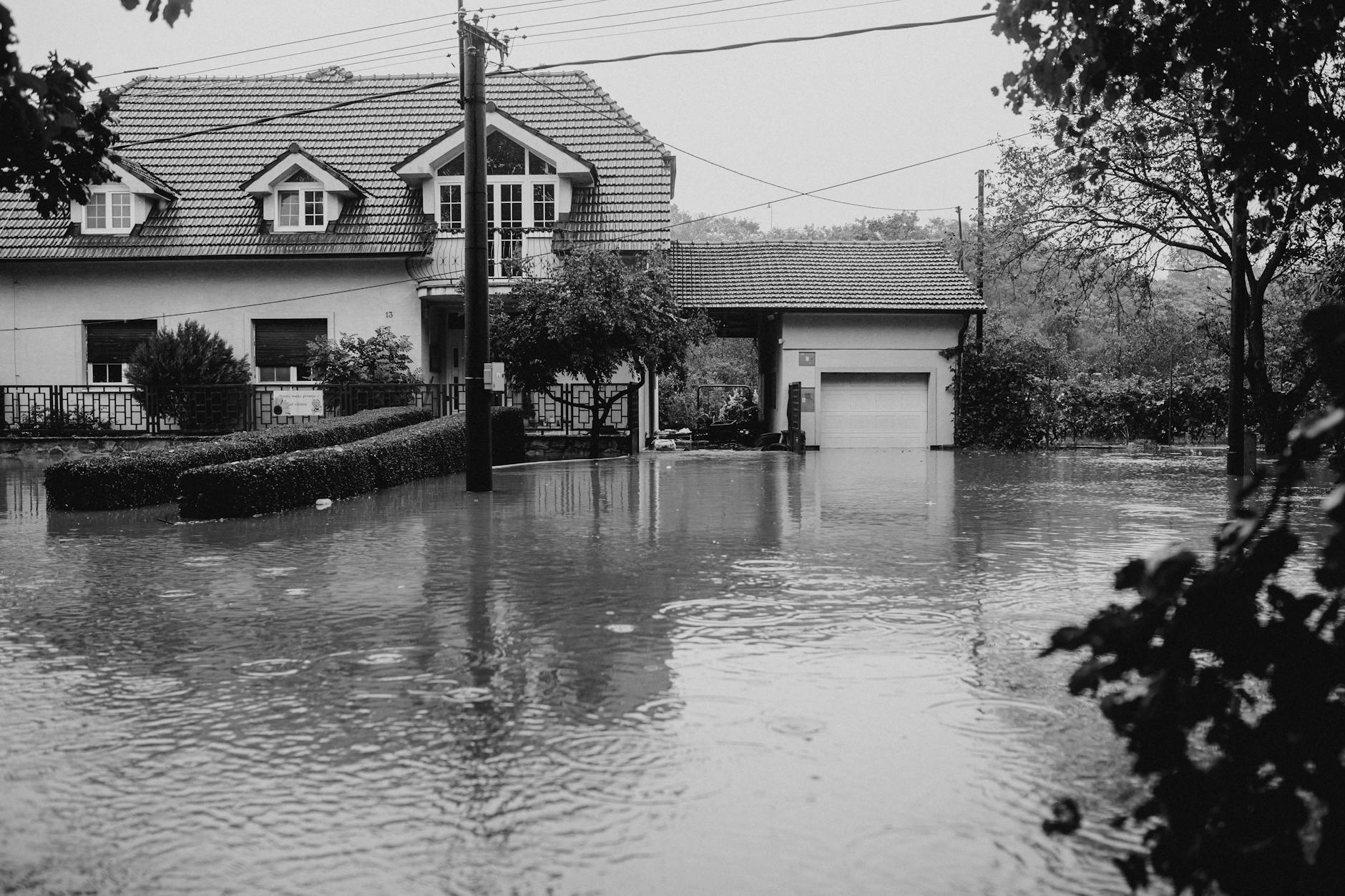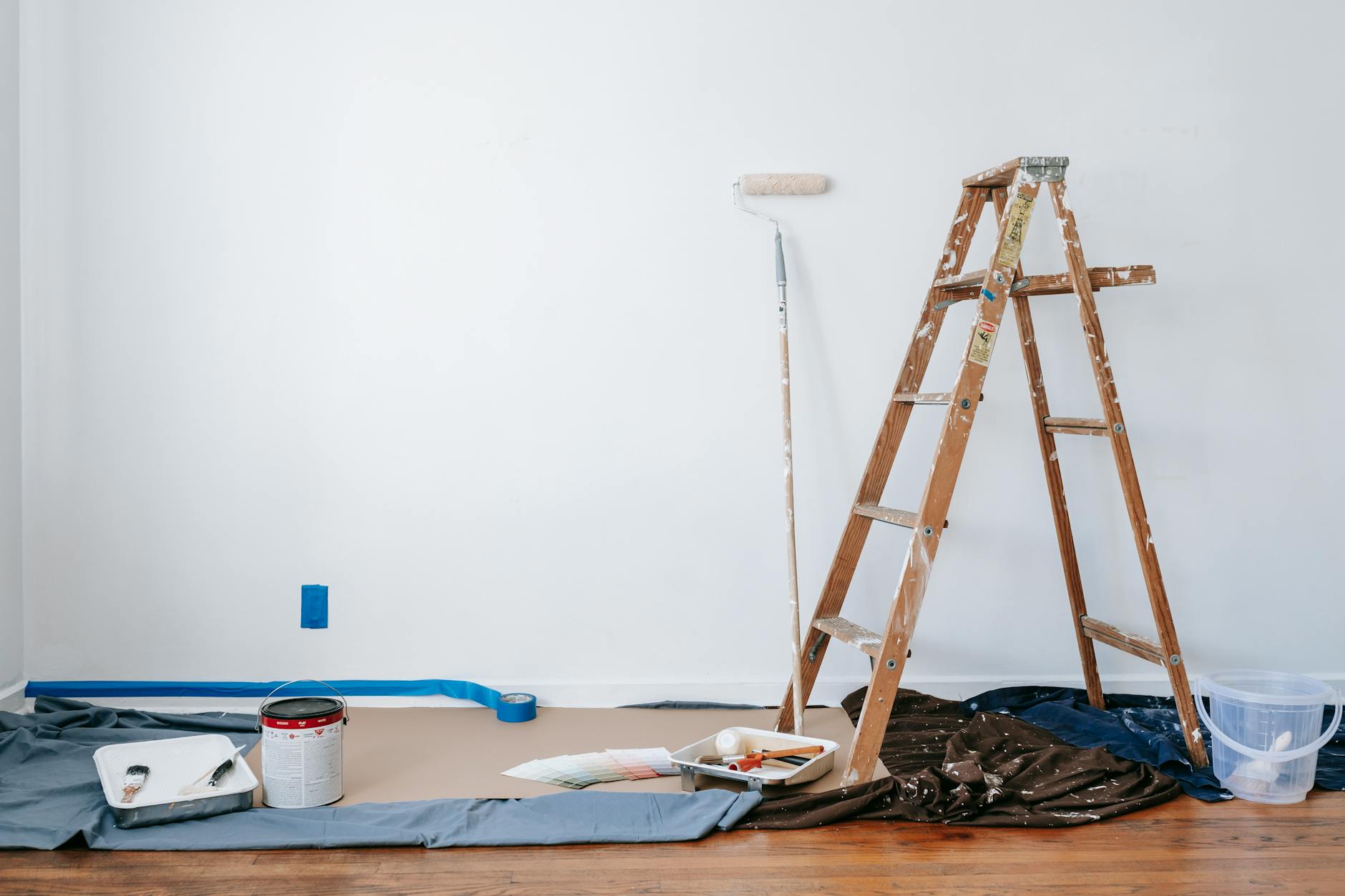If your gutters aren’t ready for the next big storm, your home could face water damage that’s much more expensive than new gutters. Gutters protect your roof, foundation, and even landscaping by moving rainwater away efficiently. When they crack, sag, or overflow, they can’t do their job—and that’s when problems start.
In this post, you’ll learn the top signs it’s time to replace your gutters before heavy weather arrives. Spotting issues early, like splitting seams, rust, or water pooling where it shouldn’t, can save you from headaches down the road. By knowing what to look for, you can avoid big repair bills and keep your home safe, dry, and worry-free during storm season.
When a major storm is on the radar, your gutters play a bigger role in home protection than many homeowners realize. Think of gutters as your home’s first line of defense, quietly directing the torrent of rain safely away while you stay dry inside. If they aren’t working as they should when bad weather hits, the fallout can be severe and costly.

Workers on a rooftop performing maintenance under dark, stormy skies, highlighting industrial resilience.
Photo by 𝗛&𝗖𝗢
Gutters don’t just catch rain; they funnel it away from places where it can do real harm. During a downpour, all that water rushing off your roof has to go somewhere. Without working gutters, the water cascades right next to your home’s foundation, soaking the soil and putting stress on your basement and the structure itself.
A solid gutter system:
Rooftop runoff is surprisingly powerful. In just one hour, a half-inch of rainfall on a 1,000-square-foot roof dumps over 300 gallons of water. With well-kept gutters, the water moves smoothly through downspouts and away from the home. If gutters are blocked, sagging, or leaky, they can’t keep up—and that’s when trouble starts.
A heavy storm will quickly reveal any weaknesses in your gutter system. The risks climb fast if your gutters clog, pull loose, or just aren’t sized right for your roof.
Here’s what can go wrong:
These aren’t just annoyances—they add up fast. Ignoring gutter problems before a storm is a lot like skipping oil changes before a long trip: the risk of breakdown is much higher, and the repair costs are always steeper.
If you only clean or check your gutters once a year, do it just before big storm season. A working gutter system keeps property damage at bay, especially when storms are unpredictable. For homes in areas known for hurricanes, tropical storms, or flash floods, strong and steady gutters are your best ally.
Key reasons gutters matter most before storms:
Gutters in good shape aren’t just a nice-to-have. They’re a must-have for peace of mind when the forecast calls for something worse than just a passing shower.
No homeowner wants to discover gutter problems when a storm is already crashing down. The best way to avoid a flooded basement, damaged foundation, or ruined landscaping is to spot trouble before the first drop of heavy rain falls. Here are the clearest red flags that your gutters are ready for retirement and what each one really means for your home.
Any crack, split, or hole in your gutter is a red alert that water is escaping in all the wrong directions. Even small openings can quickly grow larger under the pressure of heavy rain. This damage lets water seep straight through the metal or vinyl rather than being directed away. When rainwater leaks right onto your siding or foundation, it can cause rot, mold, and devastating structural issues. If you spot any physical breach—no matter how tiny—your gutters are no longer protecting your house and need to be replaced.
When gutters start sagging or bending, they’re losing the battle against gravity. This usually happens when they are overloaded with debris or water, or when fasteners and hangers start to fail. Sagging sections won’t catch water properly, leaving parts of your home exposed to runoff. Worse still, when gutters pull away from the roofline, water will pour through the gap and right next to your foundation, eroding soil and putting your home’s entire structure at risk. Gutters are only effective when they are securely aligned and firmly attached along your roof.

A metal drainage pipe with a rustic appearance on an aged wall with flaking paint.
Photo by Nikita Nikitin
Peeling paint on your gutters means moisture is sneaking under the surface, breaking down any protective coating. Metal gutters showing rust or corrosion have already lost their shield against water. This kind of visible wear is more than a cosmetic problem. It almost always means the gutter’s material is breaking down and won’t last long if heavy rain hits. If your gutters look flaky, rusty, or corroded, they’re telling you loud and clear: it’s replacement time.
Gutters are made up of sections joined at seams and held in place with fasteners. When you see gaps between seams or notice that bolts, screws, or nails are loose or missing, the system is failing. Seam separation means water will leak every time it rains. Loose fasteners allow sections to tip, tilt, or even fall off entirely, making the gutters useless in a downpour. These problems go beyond simple repairs and are a sign the entire setup is nearing the end of its life.
If water flows over the sides of your gutters every time it rains, or if you spot puddles collecting around your foundation after a storm, the message is clear. Either the gutters are clogged and too damaged to drain, or they’re just too old to keep up with even normal rain. Overflow and pooling are the most dangerous signs because water collecting around your foundation can lead to:
Ignoring these warning signs isn’t just risky—it’s an open invitation for costly water damage once storm season hits. For peace of mind, newer gutters designed to handle your regional rain patterns are your best move.
When most people think about bad gutters, they picture obvious problems like sagging metal or steady leaks. But many of the most serious risks actually hide in plain sight. These secondary signs often show up as subtle hints around the outside of your home—or even inside—well before a storm does major damage. Overlooking them or putting off replacement only raises the odds of expensive repairs and lasting trouble when the next big rainfall hits.

Photo by Helena Jankovičová Kováčová
Overflowing gutters do more than just spill water—they force moisture down the side of your house, leaving dirty streaks and water stains on the siding or brick. Over time, this constant dampness becomes the perfect home for mold and mildew. These biological growths not only look bad, but they also eat away at paints and finishes, which can lead to wood rot underneath.
Homes with a history of moisture stains or mold outbreaks almost always have gutter fails as the root cause. Waiting to fix the problem can lead to more costly repairs: repainting, siding replacement, and deep cleaning.
Nobody expects to see plants or critters living in their gutters, but it’s a common surprise after a long period of neglect. Gutters that are clogged and holding moist, decaying debris create an ideal spot for seeds to sprout and pests to settle in.
These infestations multiply the dangers:
Ignoring these signs lets minor gutter clogs turn into major home headaches, especially right before storm season.
Not all gutter issues are visible. Age plays a big part in how well your system handles rain. Most gutters have a lifespan of anywhere from 15 to 25 years depending on material and climate. Once you reach the two-decade mark, breakdowns become more common—even if the gutters “look fine” from the ground.
Like an old roof, gutters past their prime can surprise you with leaks in the middle of a storm. If your system is over 20 years old, it’s smarter to replace them before you see obvious damage. Newer options also come with higher capacity, better sealing, and built-in guards to help prevent these issues for decades to come.
Delaying replacement based on age alone is a risk: what looks okay now may become the biggest weak spot on your home when water starts to pour down.
When gutter warning signs show up right before storm season, quick and thoughtful action is your best defense against water damage and costly repairs. Here’s what you should do as soon as you notice problems with your gutters, from inspection and temporary fixes to choosing the right materials and knowing when it’s time to call an expert.
If you spot cracks, sagging, or water pouring where it shouldn’t, start by checking your gutters safely:
For quick, temporary storm prep:
If you find areas that are badly rusted, sagging, or totally disconnected, document them with photos. This will help with insurance or when calling for professional estimates.

Photo by RDNE Stock project
Picking the right gutter materials now can save headaches for decades:
For extra protection, consider:
Quality installation matters as much as material. A tough, properly installed system stands up to stronger storms year after year.
Sometimes, gutter replacement is too big or risky for a DIY job, especially when storms are near.
DIY works for:
Call a professional when:
Professionals bring safety gear, the right tools, and trained eyes—spotting what’s wrong even when it’s not obvious. They can finish big jobs in a day, using high-quality fasteners and sealants to protect your home from water intrusion over the long haul. For peace of mind, it’s often worth the investment right before a major storm hits.
A little attention to your gutters can spare you from big, unexpected headaches when bad weather rolls in. Gutters are usually out of sight and out of mind, but neglecting them can turn routine issues into emergencies. By making simple, regular gutter care part of your season-to-season routines, you can avoid the stress and high cost of urgent replacements, keeping your home safe and dry no matter how hard the rain falls.
Keeping your gutters clean and in good condition protects more than you might think. Think of routine care as the secret to getting every last year out of your gutter system. Spotting issues early stops minor problems from bulldozing their way into serious damage.
With regular upkeep, you:
Many experts recommend a full inspection and cleaning twice a year, usually in the spring and fall. Homes with lots of trees may need extra attention in-between.
You don’t need fancy tools to make gutter maintenance easy and effective—just a simple set of habits. By sticking to a routine, you can extend the life of your gutters and keep emergency fixes off your to-do list.
Easy steps for solid gutter care include:
Some homeowners also check for leaks with a hose after cleaning, patching up problem spots with gutter sealant. If you see signs of trouble—like water stains, overflows, or visible gaps—address them right away.
Routine maintenance isn’t just about preventing problems right now. It’s also about making your investment last as long as possible. Well-cared-for gutters can last up to 50 years if made from copper, and 20–30 years for aluminum or steel.
Key reasons maintenance keeps your gutters going strong:
You wouldn’t skip oil changes on your car—your gutters deserve the same regular attention for peak performance. Emergencies often come from neglect, while proper care keeps your home safe and your mind at ease before storm season.

Photo by Blue Bird
Staying ahead of gutter problems just makes sense, especially when you know heavy weather is coming. Replacing old or failing gutters before a storm can keep your home protected from the kind of water damage that empties wallets and creates lasting headaches. Even small issues—like cracks, sagging, or fading paint—shouldn’t be brushed aside since these can quickly turn into real trouble once the rain starts pouring.
Set a habit of checking your gutters at least twice a year and act quickly if you spot any warning signs. This simple routine can be the difference between a dry, safe home and a costly repair bill after every storm. Your home deserves that level of care, and your peace of mind is worth it. If you found this guide helpful, pass it along or share your own gutter stories below—neighbors helping neighbors is how we all stay safer.
Thanks for reading and taking steps to protect what matters!